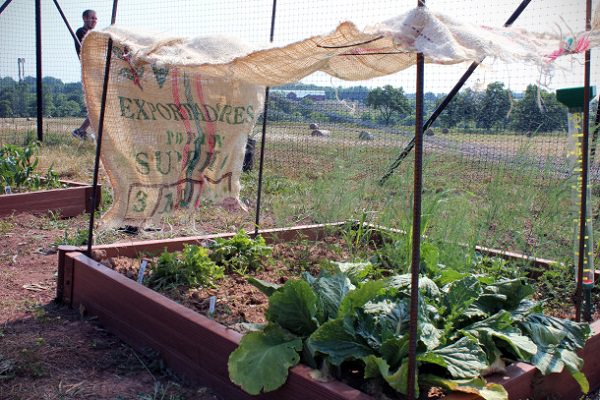- August 15, 2024
- Posted by: wellcoindustries
- Categories: Burlap, Erosion Control
Introduction
In the heat of summer, protecting your garden from the sun’s intense rays is crucial for maintaining healthy plants. Excessive sunlight can scorch leaves, stunt growth, and even kill delicate plants. To mitigate these risks, many gardeners turn to shading techniques, and one of the most effective and eco-friendly options is using burlap shade for plants. Burlap is a versatile, natural material that provides just the right amount of protection, allowing your garden to thrive even in the hottest conditions.

Understanding the Need for Shade in Gardening
Plants, like all living things, need sunlight to grow. However, too much sun can be detrimental, especially in hot climates where the intensity of the sun can cause significant damage. Overexposure to sunlight can lead to wilting, leaf burn, and in extreme cases, plant death. This is where shading comes into play, offering a simple solution to protect plants during peak sun hours.
There are various methods to provide shade, from planting in the right location to using artificial covers. Burlap has emerged as a favorite among gardeners for its balance between protection and breathability, making it an ideal choice for those looking to shield their plants effectively.
What is Burlap and Why is it Ideal for Plant Shade?
Burlap, a coarse woven fabric made from jute, hemp, or other natural fibers, is widely used in gardening for its durability and versatility. It’s a breathable material that allows air circulation while blocking out a significant amount of sunlight, making it perfect for shading plants.
One of the key reasons burlap is favored in gardening is its environmental benefits. Being made from natural fibers, burlap is biodegradable and doesn’t contribute to plastic waste. It also adds a rustic aesthetic to your garden, blending well with natural surroundings. Additionally, burlap is easy to work with, making it simple to create custom shades for plants of all sizes.
How to Use Burlap Shade for Plants
Setting up burlap shade in your garden is a straightforward process that can be done with a few basic tools. Here’s how you can do it:
- Measure Your Plants: Start by measuring the area you need to cover. Whether it’s a small plant or a larger garden bed, make sure to get the dimensions right.
- Cut the Burlap: Once you have your measurements, cut the burlap to the appropriate size. It’s better to leave a little extra fabric to ensure complete coverage.
- Secure the Burlap: Drape the burlap over the plants, ensuring it’s not touching the leaves directly to avoid potential damage. You can secure the burlap using stakes, clips, or by tying it to nearby structures. Make sure it’s tight enough to stay in place but loose enough to allow air circulation.
- Check the Coverage: Ensure that the burlap provides adequate shade without completely blocking the light. The goal is to filter the sunlight, not eliminate it entirely.
- Adjust as Needed: Over time, you may need to adjust the burlap as the plants grow or as the angle of the sun changes. Regular checks will help you maintain optimal shading.
Benefits of Using Burlap Over Other Shading Materials
When compared to other shading options like plastic or synthetic shade cloth, burlap stands out for several reasons. First, its breathability is superior, which helps prevent overheating and promotes healthy air circulation around the plants. Second, burlap is environmentally friendly, decomposing naturally without leaving harmful residues. Finally, burlap’s natural appearance makes it an aesthetically pleasing choice, blending seamlessly into garden landscapes.
Caring for Plants Under Burlap Shade
Once your plants are shaded with burlap, it’s important to maintain them properly. Burlap allows water to pass through, so regular watering is still necessary. However, because the burlap reduces evaporation, you may find that your plants require less frequent watering.
Monitor your plants for any signs of stress, such as yellowing leaves or stunted growth, which could indicate that the shade is too dense. If this occurs, adjust the burlap to allow more light to filter through.
Conclusion and Call to Action
Burlap shade is an excellent tool for any gardener looking to protect their plants from the harsh summer sun. Its combination of breathability, environmental friendliness, and ease of use makes it a superior choice for garden shading. By following the steps outlined in this guide, you can ensure that your plants remain healthy and vibrant throughout the hottest months.
If you’re ready to enhance your gardening practices, consider incorporating burlap shade into your routine. Your plants will thank you!
